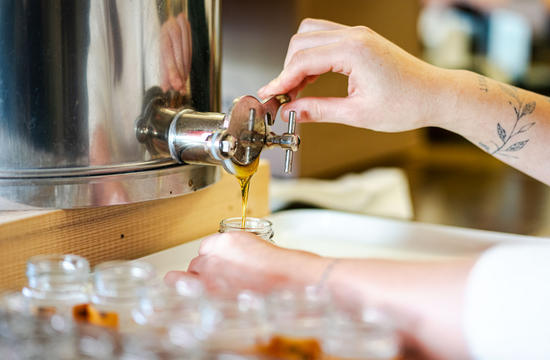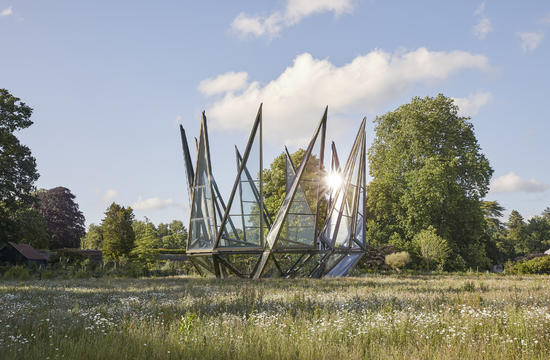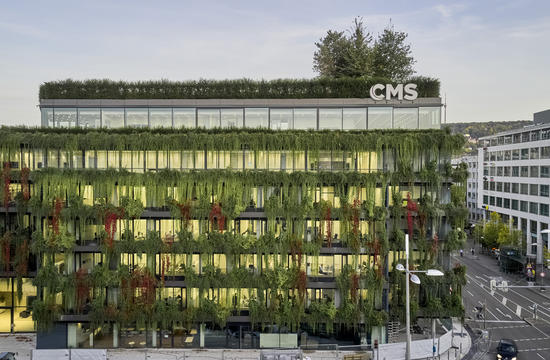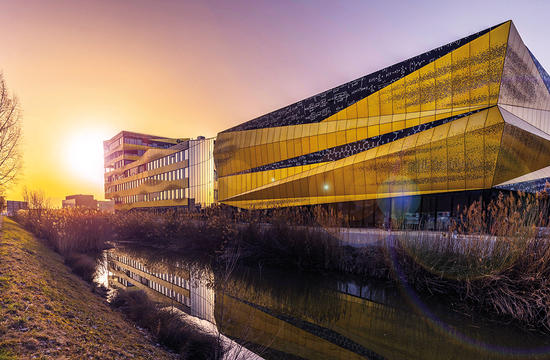For safety's sake
Text: Andrea Jall | Photos: Schmidt Hammer Lassen Architects / Photographer Adam Mork
Testing for wind load and air permeability – along with resistance to driving rain, fire and burglars – is part of their job. (From left) Tobias Sigg, Bernd Seemüller and Oliver Döring make up the RAICO test team. Their mission: to check our products for safety. Whenever anything new or extreme arises, the special team gets out its kit.
“Clear the area! About to fire!” is the deafening instruction. Forty-eight times. Silence. Not a soul is to be seen. But something at the back begins to move, very slowly. A haze of dust and the smell of gunpowder likewise slowly permeate the air.
It might sound like the start of an action thriller, but we are actually talking about a product test. The venue is not Hollywood, but the south-German city of Ulm. We are, to be precise, in the German state of Baden-Württemberg’s only test-firing range for the certification of weapons, ammunition and associated safety technology – one of the most modern facilities of its type.

It all began in the autumn of 2014 when Philipp Thüsing, a member of our sales staff, called our project service. He had a great project in hand, which promised to be a real challenge. A glass company called Wagener from Kirchberg in the Rhineland-Palatinate had an order from BLB, a Duisburg-based client, to work with FPS Funke Popal Storm, a firm of architects from Oberhausen, on the construction of a new six-storey headquarters building for the Mönchengladbach police force. The design envisages the use of the FRAME+ 90 WI system for the building’s fixed glazing. The range already comes with RC3-certified break-in prevention, but it still needs a certificate confirming resistance to ballistic penetration. The starting pistol is now in the hands of Werner Wölfle, the head of department in charge of RAICO’s project services, and his team. Ideas are researched, sketched out and rejected, until – after a series of joint brainstorming sessions, meetings and calculations – the team comes to a unanimous verdict: “Our profiles can do it.” It is now just a matter of getting the idea officially stamped and certified.

Hardness testing at the lab in Ulm:
The test target, which measures 1.3 x 2 metres (about 4¼ by 6½ feet) and weighs almost half a ton (430 kg), is kept at an absolutely constant room temperature of 21 °C. Action! A .44 Remington Magnum and a .357 Magnum are fired at the target from a range of just 5 metres (about 16 feet). The RAICO product test requires three shots of each calibre at the relevant points - a total of 48 shots. Each one accounts for up to 440 +/- 10 m/s.
“It’s looking good!” Tobias, Bernd and Oliver, together with the firing range safety officer, examine the test target after use. The RAICO 90 FRAME+ WI fixed glazing system has indeed passed its “baptism of fire” in the truest sense of the term. Not a single projectile has managed to penetrate into the interior, and there is no trace of glass splinters on the inside of the test target. This glazing system is also the first of its type ever to withstand the so-called “90° edge shot”. Mission accomplished. BR4 NS certificate in the bag.

Another bullet-proof project: the International Criminal Court. The fact that RAICO and its products are able to meet ever-increasing security requirements is amply demonstrated by the rebuilt security complex in The Hague, which was finished last year. The collection of buildings concerned, with its surrounding glass curtain wall, has been built to blend into the dunes of the Dutch landscape. However: “One special challenge associated with the commissioning of this building arose from the high security specifications of the International Criminal Court regarding protection against break-in, and also explosions and gunshots”, in the words of the project’s architect, Pim IJsendoorn. Some of the enormous glass elements, which are up to 75 mm/3 inches thick, weigh 1.2 metric tonnes – making a special structure absolutely vital. The THERM+ S-I mullion-and-transom system, with its profile width of 76 mm, was used for this reason.
A castle of glass: The foyer curtain wall of the new International Criminal Court in The Hague, which measures 2000 m² in area, consists of 3.5-metre-high glass elements in widths of 1.2 and 2.4 metres. Some of them are 75 mm/3 inches thick and weigh 1.2 metric tons. RAICO’s THERM+ S-I system was used to fulfil the exacting security requirements of the design of the ground-floor curtain walls.





